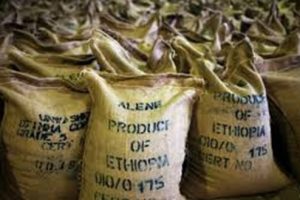
Before the emergence of modern society and scientific innovation, human beings used to adopt their own calendar following spatial variation around them, thoroughly investigating periodical difference and position of heavenly entities direction of winds and phenomenon associated within.
Indeed thanks to great thinkers and the emergence of science and technology, the world celebrates new-year after the earth makes a full circle around the sun. Leaving the deep explanation to geographers and scientists exploring the cosmos, the concept of time and space and insight of chronology is an intrinsic shared cognitive domain of humanity.
To this end, history tells us that diverse societies of the world adopt their calendar and celebrate new-year attributing to the dynamism of heavenly bodies, religious beliefs, and customizing situations to the cultural set up of a given society.
Be it as it may, in Ethiopia, apart from being the interchange of time, some cultural calendars appeared to be of paramount importance for their virtuous contribution and values to humanity. Hence, they grab due concern of UNESCO as an Intangible Cultural Heritage of Humanity.
Fichee-Chambalaalla is one of the five Ethiopian heritages registered as the Intangible Cultural Heritage of Humanity by the United Nations Educational, Scientific, and Cultural Organization (UNESCO), Fichee-Chambalaalla is a New Year festival amassed and colorfully celebrated among the Sidama people on May 21 and 22.
However, due to the risk of COVID-19 the clan’s leaders decided to mark this year’s celebration at home. Prime Minister Abiy Ahmed and state’s men have applauded the decision of the elders to celebrate the day at home.
In his congratulate message, the Premier said the festival mainly teaches the essence of sharing, demands good governance, strengthens cooperation, and encourages unity.
Above all, Fichee-Chambalaalla has a special place for children and knowledge transfer. The festival is a key moment to pass down existing knowledge from a parent to a child through the narration of elders, he said. Accordingly, the festival “is a wonderful asset that we should always apply in our home,” the Prime Minister stated.
“We pray with the Sidama people unto God to leave the coronavirus, which threatens our world and our country, behind us, and to lead us into the path of prosperity in the New Year,” he said.
“We were all eager to celebrate this year’s Fichee-Chambalaalla colorfully. However, due to the pandemic, we are not able to hold the celebration at the Gudumale square of Hawassa in its original procedure,” he said.
The Prime Minister appreciated the Sidama elders for the timely message they delivered calling for the celebration to take place at home by taking into account the current global situation.
He finally urged the people to celebrate the festival at their home, taking all measures required to curb COVID-19, including washing their hands and maintaining physical distancing.
Hirut Kasaw (PhD), Culture and Tourism Minister, on a good wish statement, said that glory for fathers and forefathers of the Sidama, Fichee Chamballaala has not only become the glorious value of the Sidama People but also a heritage of all humanity.
She further said that the decision to celebrate Fichee at home shows the maturity and determination of the community leaders in a bid to combat the global pandemic and what the time demands.
So what is Fichee and its significance underlying elements which make the day the most glorious and blessed among the Sidama leaving aside the fundamentals of the formula that science clearly shows that the concept of rotation and revolution is an objective reality nobody could go to make it the title of best arguments?
Fichee-Chambalaalla is a New Year festival celebrated by the Sidama people. It is one of the socio-cultural heritage handed down by forefathers to descendants.
According to the Sideman’s oral tradition, Fichee commemorates a Sidama woman who visited her parents and relatives once a year after her marriage, bringing buurisame, a meal prepared from false banana, milk, and butter, which was shared with neighbors.
Fichee has since become a unifying symbol of the Sidama people. Each year, astrologers determine the correct date for the festival, which is then announced to the clans. Communal events take place throughout the festival, including traditional songs and dances. Every member participates irrespective of age, gender, and social status.
On the first day, children go from house to house to greet their neighbors, who serve them buurisame. During the festival, clan leaders advise the Sidama people to work hard, respect and support the elders, and abstain from cutting down indigenous trees, begging, indolence, false testimony, and theft.
The festival therefore enhances equity, good governance, social cohesion,peaceful co-existence, and integration among Sidama clans and the diverse ethnic groups in Ethiopia. Parents transmit the tradition to their children orally and through participation in events during the celebration. Women in particular, transfer knowledge and skills associated with hairdressing and preparation of buurisame to their daughters and other girls in their respective villages.
Ficha was one of the 23 elements inscribed out of a total of 35 that were proposed at the 10th session of the committee for the safeguarding of intangible cultural heritage meeting in Windhoek, Namibia.
Fiche Chamballaala is Ethiopia’s second Intangible Cultural Heritage of Humanity to be inscribed by UNESCO, next to the Masqel festival, the finding of the True Cross.
Moreover being home to diverse nation and nationalities, Ethiopia owns numerous tangible and intangible heritages which are registered and waiting to be inscribed in UNESCO list. Thus it seems sound to dub the country as the land of origin.
The Ethiopian Herald May 28, 2020
BY LAKACHEW ATINAFU


